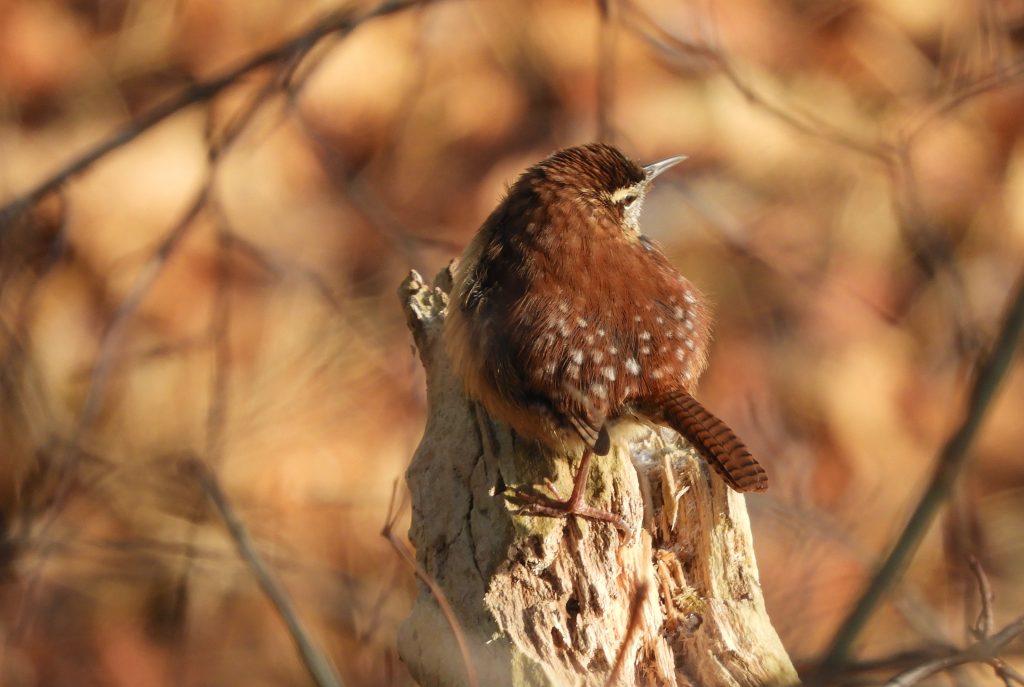
Haldimand County. ON. December 27 2022. The farmland where I had enjoyed watching a couple of Northern Harriers six weeks ago is a clay plain, the left-overs an ancient glacial lake. It is wide and flat, criss-crossed by a grid of long straight roads: hot and dreamy in August, windswept and cold in January. I went back there today, wanting to see if the harriers were still around in this snow-drifted landscape.
A century or more ago, European settlers, through their land surveyors, were rectangularly methodical in dividing up this new-to-them land. It was parcelled up into townships, concessions and lots with provision for roads in between. Sometimes, where the work of two surveyors met, a clash of straight-line geometry resulted, with roads and fence-lines colliding and bouncing off each other at angles, obtuse and acute.
I was in one of these geometrically-muddled corners and driving slowly along quiet country roads, on the lookout for a harrier. I drove beneath a large bird perched nervously on top of an old utility pole and assumed it to be a Red-tailed Hawk. I was wrong. About an hour later I had circled around, as much inadvertently as intentionally, when I saw this same large bird but now in flight. This was not a Red-tailed but a Rough-legged Hawk, a horse of quite a different colour – to mix metaphors.
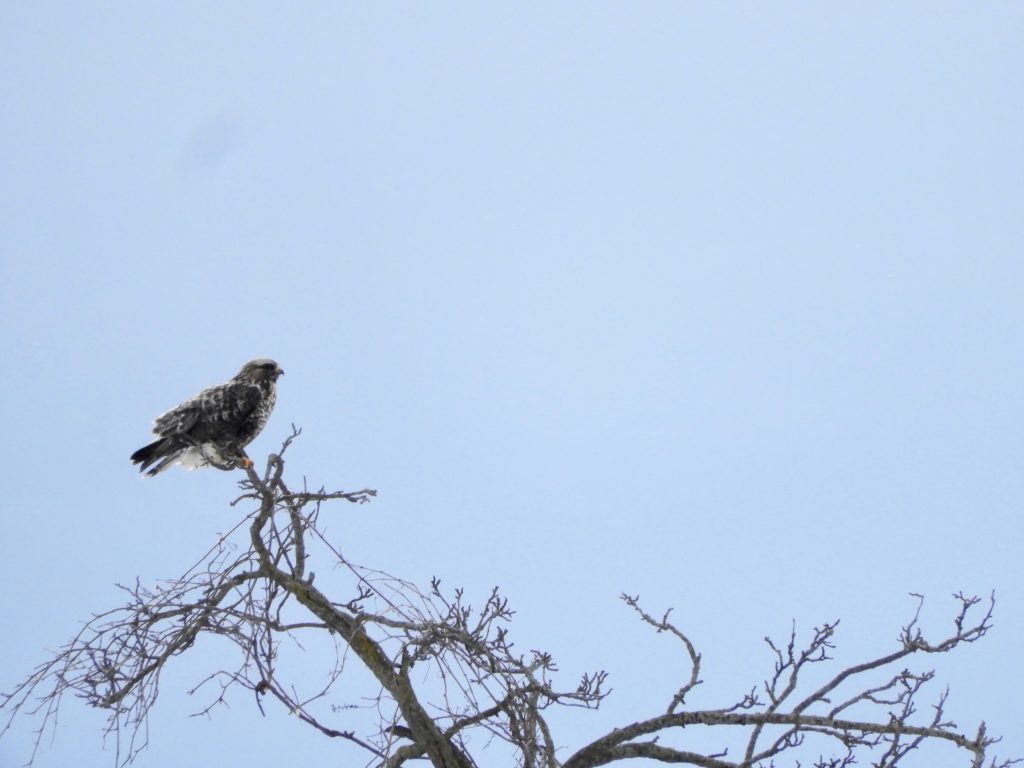
Rough-legged Hawks are an Arctic species with a breeding distribution across the taiga and tundra of the Old and New Worlds. The Ontario Breeding Bird Atlas of 2001-2005 concluded there were fewer than five breeding pairs in the vastness of Ontario. It is an uncommon winter visitor here, but happily for us birders it seems to like this wide-open country. It is a treat and a privilege to see one.
I pulled to one side, carefully because sometimes where gravel becomes grass, grass become snow and snow becomes an unseen ditch. Safe and settled, I soon realized that a Northern Harrier had shown up and was coursing the fields: skimming low on light bouncy wing-strokes, sometimes turning abruptly to drop into the deeper grass for a catch. Meanwhile the Rough-legged Hawk had settled on the top of a lone tree. I watched and admired both for a long time and was lucky enough to get perhaps my best-ever photos of the hawk.
There were other nice birds today including: a small flock of Wild Turkeys, a large flock of Snow Buntings and a solitary adult Bald Eagle. While they all deserve a bit more than footnote status, that’s all they get because the Rough-legged Hawk was unquestionably my Bird of the Day.
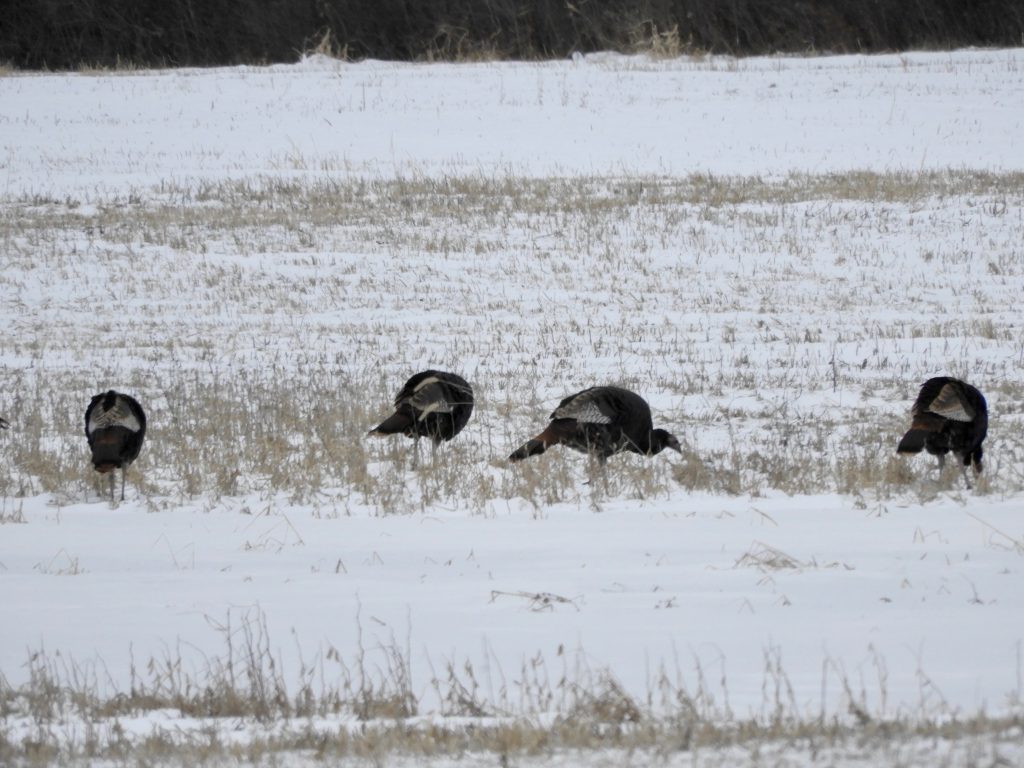
 Eastport, Hamilton, ON. December 26 2022. The bitterly cold storm of this Christmas Day will be remembered for a long time by the many who had it hard. Perhaps surprisingly, with the wind’s direction in our favour, we got off lightly. Had we lived downwind of the lake we might well be digging our way out of a metre or two of snow.
Eastport, Hamilton, ON. December 26 2022. The bitterly cold storm of this Christmas Day will be remembered for a long time by the many who had it hard. Perhaps surprisingly, with the wind’s direction in our favour, we got off lightly. Had we lived downwind of the lake we might well be digging our way out of a metre or two of snow.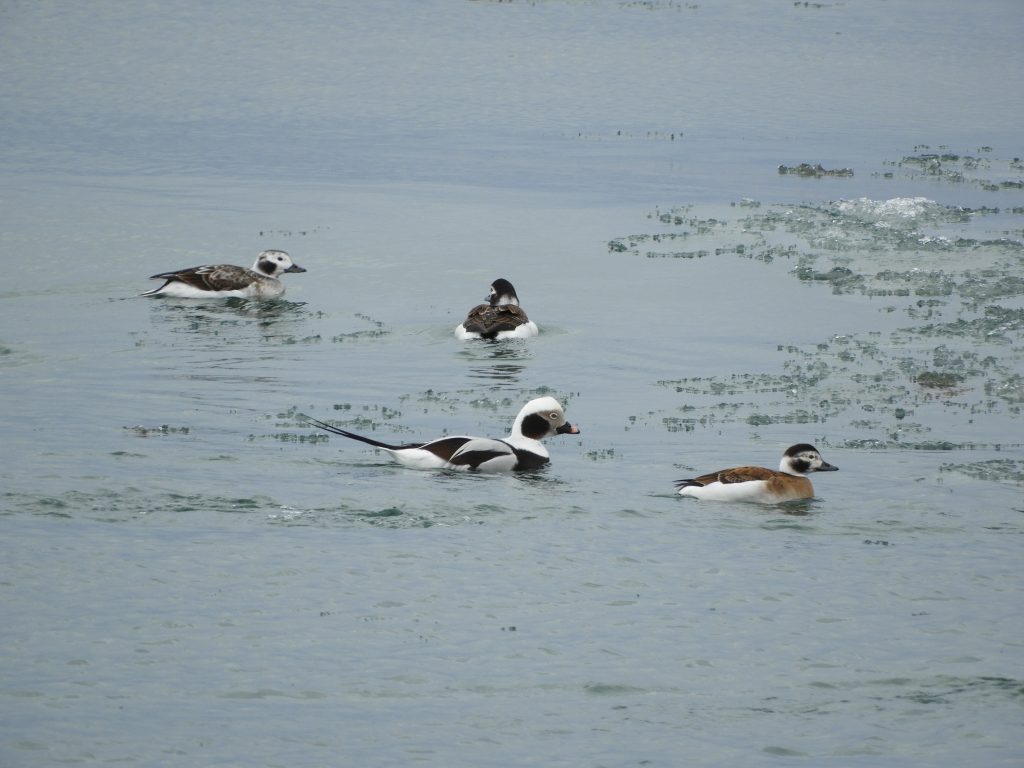
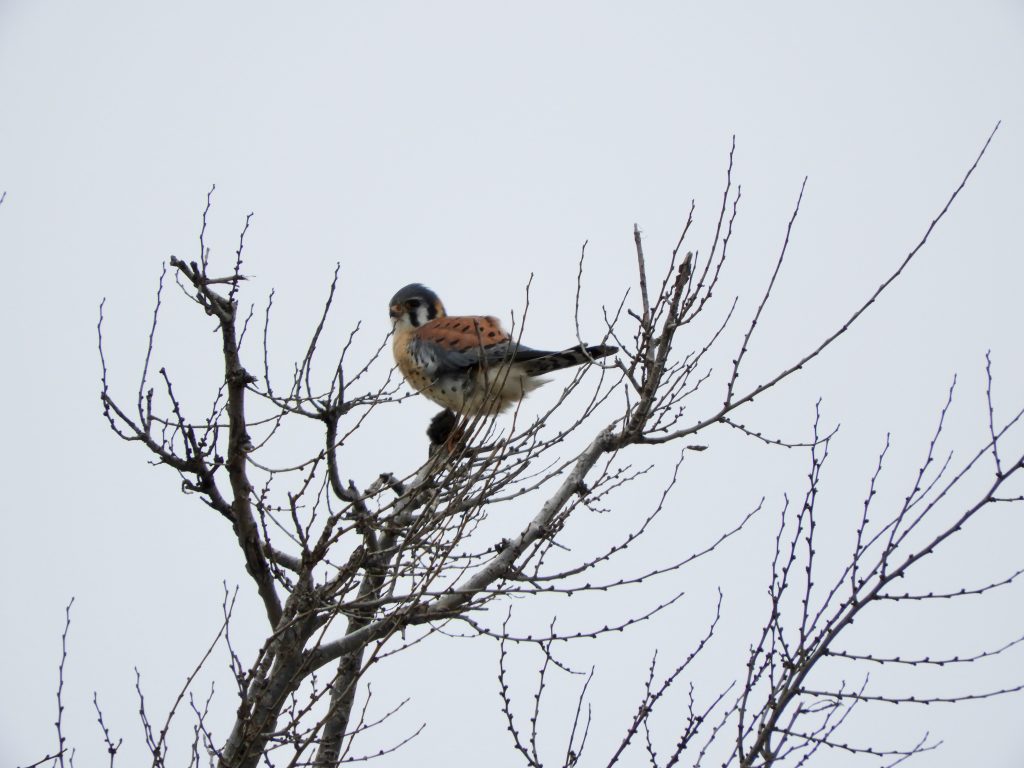 Although it’s six months off-season, I have the Ontario Breeding Bird Atlas in mind and a pair of them nested in this area two summers ago, my hopeful suspicion is that these were the same birds and that they’ll nest again.
Although it’s six months off-season, I have the Ontario Breeding Bird Atlas in mind and a pair of them nested in this area two summers ago, my hopeful suspicion is that these were the same birds and that they’ll nest again.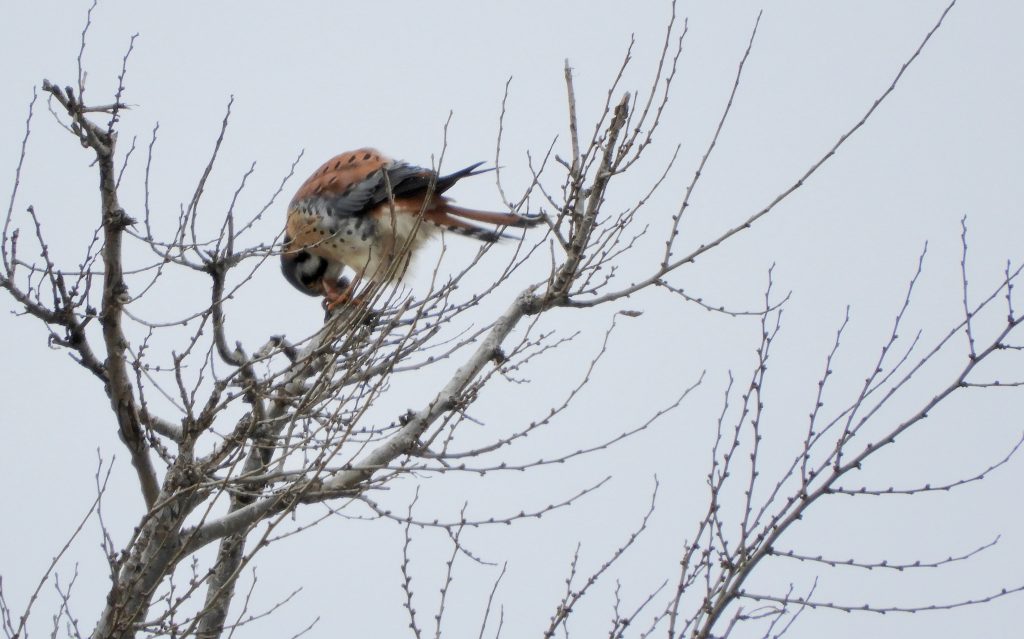 Later, on my return, I kept a watchful eye for the kestrels and was very pleased to spot one of them, rocking in the gusts at the top of a wind-torn tree. This time I had a better vantage point and much better light. He was busy ripping apart a rodent of some kind, far too busy refuelling to bother with onlookers like me. Such is the life, death and purpose of a roadside mouse – post-Christmas dinner for my Bird of the Day.
Later, on my return, I kept a watchful eye for the kestrels and was very pleased to spot one of them, rocking in the gusts at the top of a wind-torn tree. This time I had a better vantage point and much better light. He was busy ripping apart a rodent of some kind, far too busy refuelling to bother with onlookers like me. Such is the life, death and purpose of a roadside mouse – post-Christmas dinner for my Bird of the Day.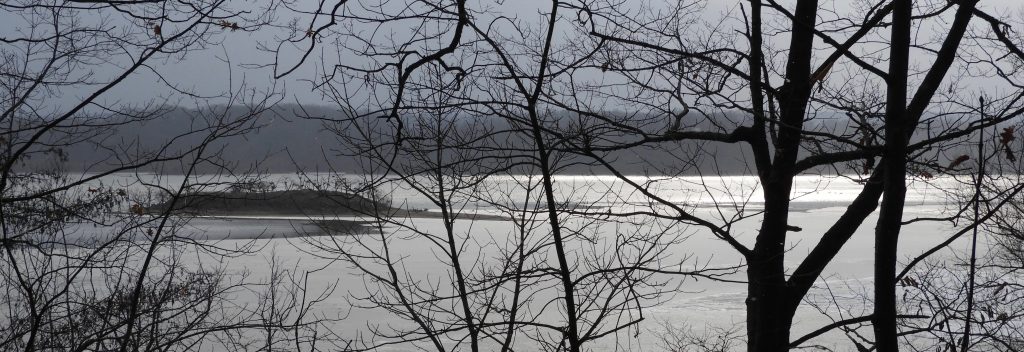 Royal Botanical Gardens. Cootes Paradise, Hamilton. ON. December 18 2022. Ending my walk, I turned to look back and was struck by the silvery-ness of this shallow, remnant lake at the west end of Lake Ontario. I was finishing a long, almost bird-less, walk and realized now that silver had dominated this December day.
Royal Botanical Gardens. Cootes Paradise, Hamilton. ON. December 18 2022. Ending my walk, I turned to look back and was struck by the silvery-ness of this shallow, remnant lake at the west end of Lake Ontario. I was finishing a long, almost bird-less, walk and realized now that silver had dominated this December day.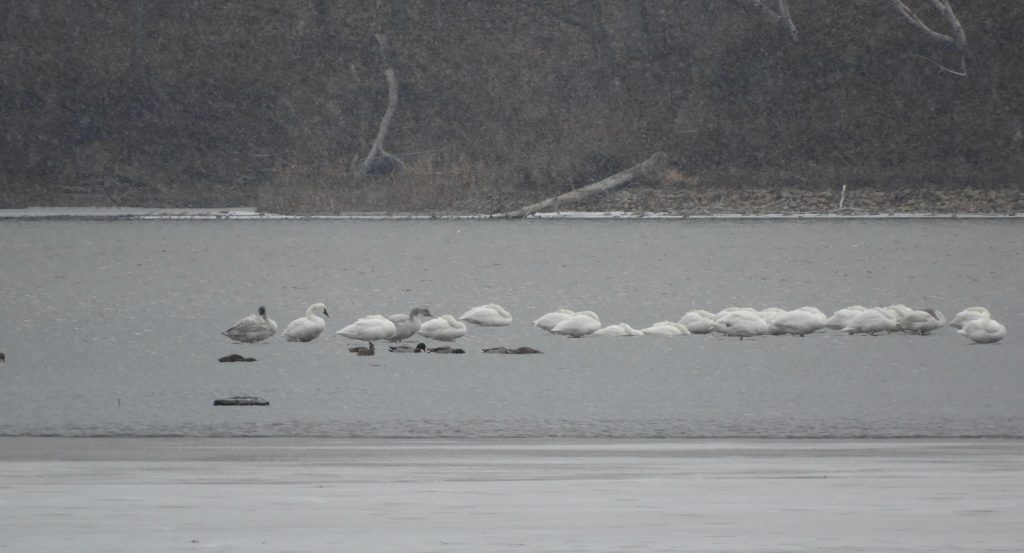
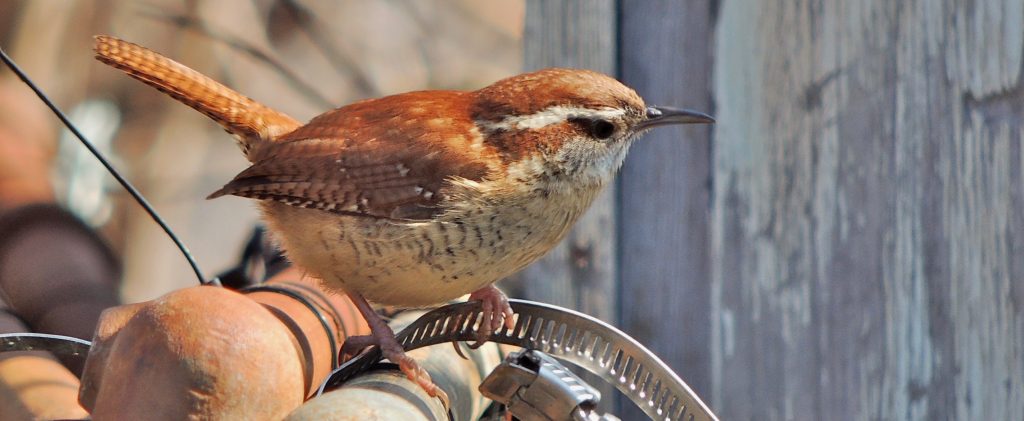 Royal Botanical Gardens. Cootes Paradise, Hamilton. ON. December 17 2022. Under a rather sullen sky I suggested we get out and get some exercise. It was not the sort of weather to inspire much of anything, instead it was windy, raw and hovering around freezing. (I know one or two birders who profess to love a day like this).
Royal Botanical Gardens. Cootes Paradise, Hamilton. ON. December 17 2022. Under a rather sullen sky I suggested we get out and get some exercise. It was not the sort of weather to inspire much of anything, instead it was windy, raw and hovering around freezing. (I know one or two birders who profess to love a day like this).